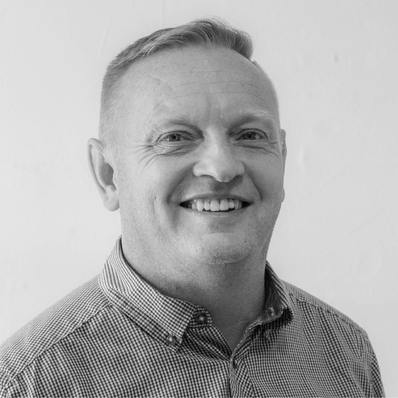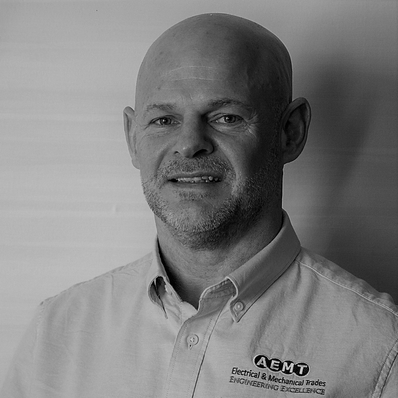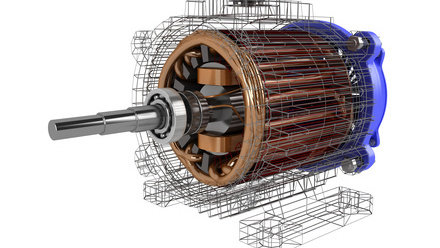Hazardous Area (Ex) Repair Course
Upcoming Courses
Course Objectives
The aims of the course are to give delegates a thorough knowledge of how the different protection concepts and standards should be used when overhauling, repairing, or reclaiming Ex equipment suitable for each zoned area. An understanding of the correct procedures and practices to be used for the overhaul of explosion protected motors, pumps, gearboxes and other equipment, so that they will comply with the original certification to which they were manufactured, and/or comply with the original standards used, as well as a comprehensive understanding of the legal requirements, risk assessments, and health and safety requirements, when overhauling and maintaining Ex apparatus.
Course overview
Day 1 “Principles of protection in Explosive atmospheres" which focuses on Protection
concepts and how they work, Hazards, Standards, Certificates, Temperature classes and
Zones, ATEX & IECEx, regular debates and question and answer sessions followed by a
written assessment.
Day 2 "Hands on Theory & Practical" all information gained from Day 1 will be used to help
delegates navigate Day 2 where they get hands on with the equipment, identification,
calculation, measurements, finding the correct standards, reports and repair sheets will all
be part of this practical day of training and assessment.
Day 3 "IEC 60079-19 Ex Equipment, Repair overhaul and reclamation" the final day of the
course is focused on the international repair standard, the requirements, and the
requirements of many other standards mentioned, we look at reclamation techniques,
testing, documentation, responsibilities, definitions and general good practice, again debates
and Q&A sessions happen throughout the day with ends with a final assessment.
Course requriements
- Basic knowledge of electrical and mechanical trades
- Familiarity with ATEX, IECEx, and the 60079-19 standards
- Ability to work with hazardous area equipment
- Willingness to learn and apply new concepts and techniques
- Access to your standards library, particularly the latest edition of IEC 60079-19
- A good standard of written and spoken English, or access to an interpreter for the duration of the course
2024 prices
| Members | Non-members | |
| UK Course | £1,350 | £1,850 |
| UK Refresher Course | £995 | £1,495 |
| International Course | £1,750 | £2,250 |
| International Refresher Course | £1,350 | £1,850 |
The course is designed to provide learners with a thorough knowledge of how different protection concepts and standards should be used when overhauling, repairing, and reclaiming hazardous area equipment. The course covers ATEX, IECEx, and the 60079-19 standards. By completing this course, learners can expect to gain the following:
- A thorough understanding of how to service and repair Ex equipment such as electrical rotating machines and other associated equipment
- Knowledge of how to use different protection concepts and standards when overhauling, repairing, and reclaiming hazardous area equipment
- Familiarity with ATEX, IECEx, and the 60079-19 standards
- The ability to safely repair Ex equipment
Course Requirements
- Basic knowledge of electrical and mechanical trades
- Familiarity with ATEX, IECEx, and the 60079-19 standards
- Ability to work with hazardous area equipment
- Willingness to learn and apply new concepts and techniques
- Access to a computer and internet connection for online learning
- A good standard of written and spoken English, or access to an interpreter for the duration of the course
2024 Prices
| Members | Non-members | |
| Online Course | £995 | £1,495 |
| Online Refresher Course | £995 | £1,495 |
| Practical 1-2-1 Bolt-on | £355 | £355 |
Questions and Answers
Who should attend?
It is important for a manager or supervisor to attend the courses so that they become the “Responsible Person” able to fully understand and take responsibility for ex repairs. All other staff refurbishing Ex explosion protected apparatus should also be trained.
It is recommended that a minimum of two electrical or mechanical engineers/technicians should attend the courses per company.
This may also include maintenance staff looking after Ex motors, generators, pumps, fans, gearboxes, valves, and instrumentation, or involved in the replacement of spare parts such as bearings
The courses are also recommended for administration, sales, and stores staff requiring a knowledge of equipment suitability for zoned areas.
What are the key learning points?
Key learning points:
-
Ignition sources in flammable gases, vapours and dusts
-
Principles of Ex protection for gas and dust
-
Temperature classification and groups of apparatus
-
Certification, standards and marking
-
Requirements and procedures of ATEX, DSEAR and relevant 60079 standards such as BS EN IEC 60079-19
-
Principles of Ex protection concepts
-
Mechanical protection concepts:
-
Ex h incorporating "c" constructional safety, "k" liquid immersion
-
Q & A Sessions throughout the course
-
Ex d volume calculations, flamepath ID and measuring.
-
Pracitcal sessions
-
Assessment
The course programmes rely upon the full involvement of the delegates in discussions and exercises.
Do you cover the installation, maintenance and inspection of Ex Equipment?
We specialise on Units Ex 005 of the IECEx Recognised Training Provider Programme (RTPP). This focuses on the IEC BS EN 60079-19 standard on repair, overhaul and reclamation of Ex equipment.
We can, however, offer a bespoke course covering aspects of IEC BS EN 60079 parts 14 and 17 on the removal, installation, maintenance and inspection of Ex equipment for service centres. Note that this would not be a CompEx course.
Do you offer on site training?
Yes! We can offer on site training under special circumstances. Before considering this option - it is often difficult for company's to ensure all engineers are free for a 3 day onsite course. Often it is easier to send your your engineers in batches to our scheduled dates, or look at online training.
If you would like to speak to us about onsite training, please contact us on training@aemt.co.uk.
Do you certify engineers as 'competent' after the completing the course?
Competence comes from experience built up in the workplace under the supervision of a 'Responsible Person'.
The course gives delegates an understanding of the technical standards and documentation required to complete the repair, overhaul or reclamation of hazardous area equipment.
Delegates will receive a Certificate of Assessment when completeing the course, or a Certificate of Attendance for attending the course, but have not passed the assessments.
For more details check out the IECEx resources below.
How do I become certified as a competent repairer?
What is included in the cost of the classroom course?
We include:
-
Coursenotes reference book
-
Ex labels and reference data booklet
-
Lunch, Coffee and Refreshements
-
AEMT Notepad, pens and holdall
-
Certificate on completion
What we don't include:
-
Accommodation, travel costs and expenses
-
Ongoing support, unless you are a member of the AEMT
-
A guarantee of passing the assessments
A Brief History
The first BEAMA/AEMT "Code of Practice for the Repair and Overhaul of Ex Electrical Apparatus" had input from major users of Hazardous Area Ex Equipment, and the Health and Safety Executive (HSE). It was subsequently adopted as the British and European Standard BS EN 60079-19, and International Standard IEC 60079-19, which is now used as the basis to audit companies to IECEx Certified Service Facilities. They are the recognised international standards to which Ex equipment should be repaired and overhauled. Since 1984 the AEMT has trained delegates from the repair industry, and personnel from the major oil, chemical, gas and water treatment companies from around the world. Proceeding the publication of the first code of practice for The Repair and Overhaul of Electrical Equipment for us in Potentially Explosive Atmospheres, the association has put together a selection of modules covering the Theory and Practical nature to ATEX and IECEx equipment repair. Based on 2018 figures, the association has trained staff in over 86% of all IECEx Certified Service Facilities in the UK, Gulf, and South East Asia, as well as engineers from many international oil, gas, and chemical companies. A number of delegates have also gone on to be successfully assessed and audited for their individual IECEx Personal Competency (CoPC) Certificates.



